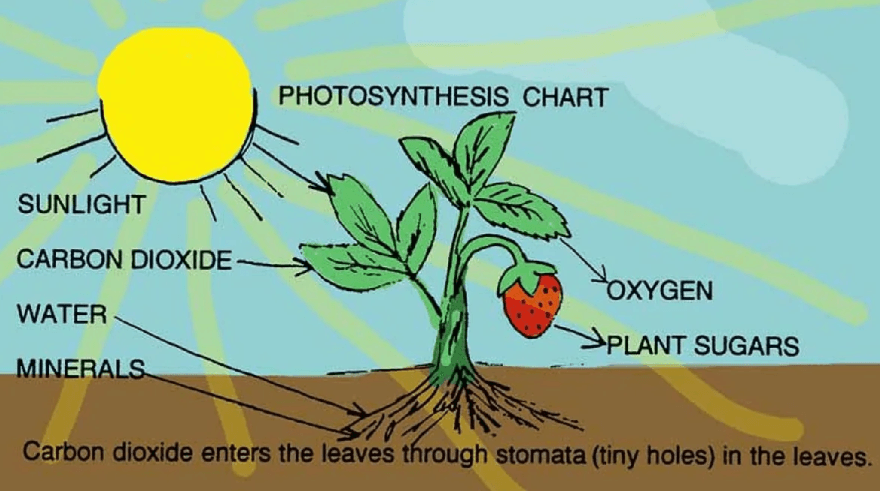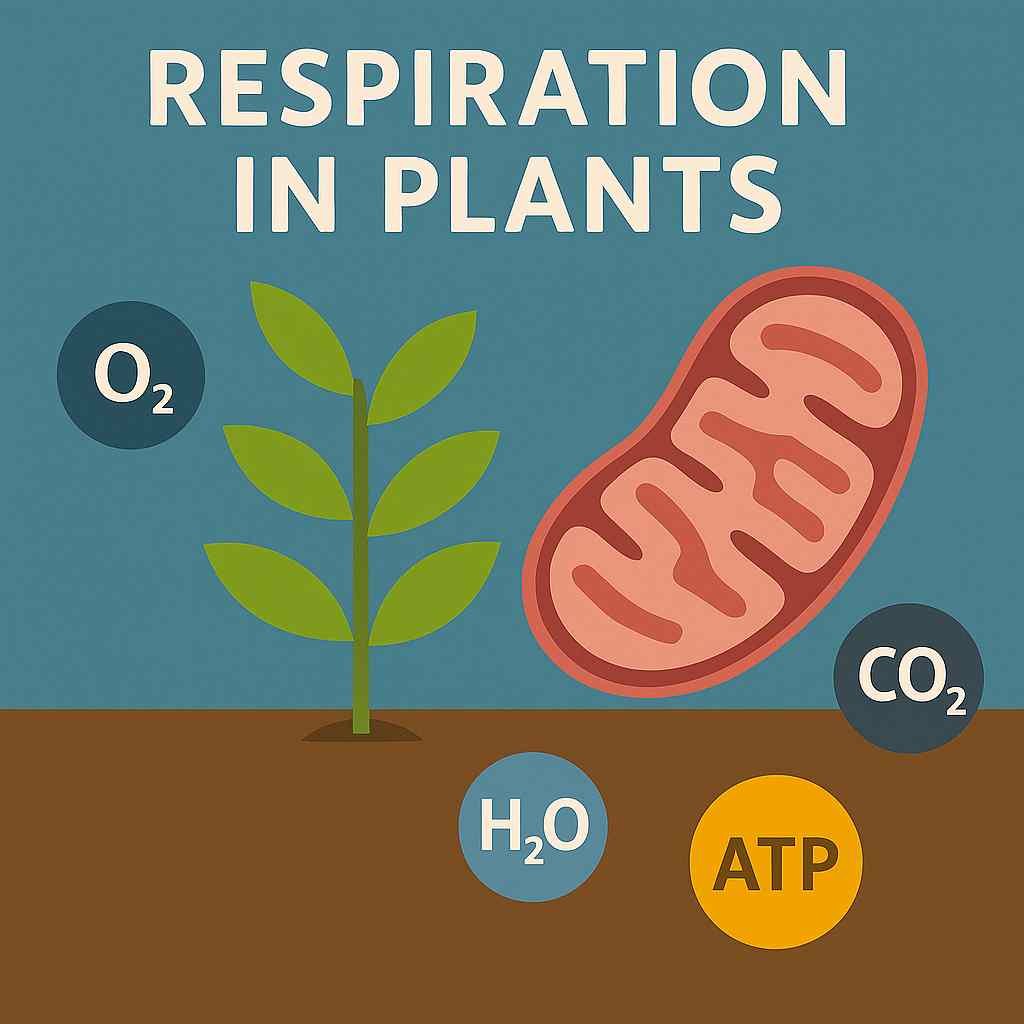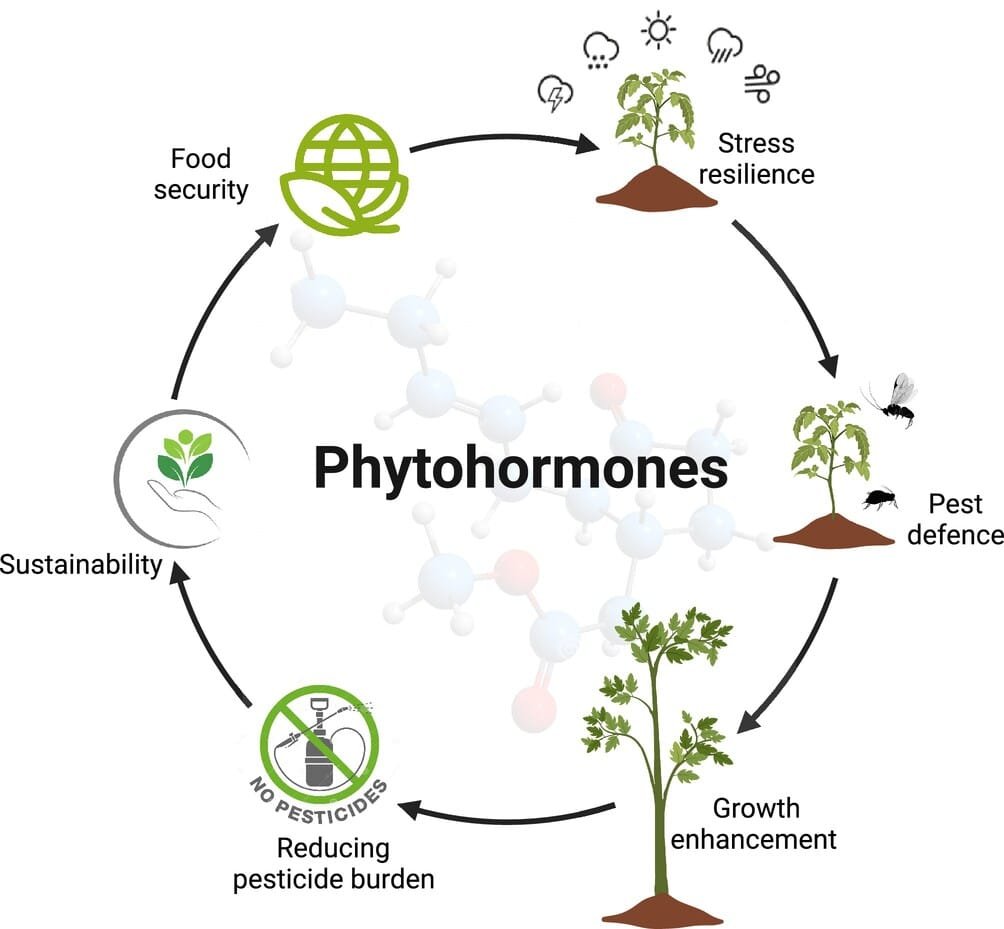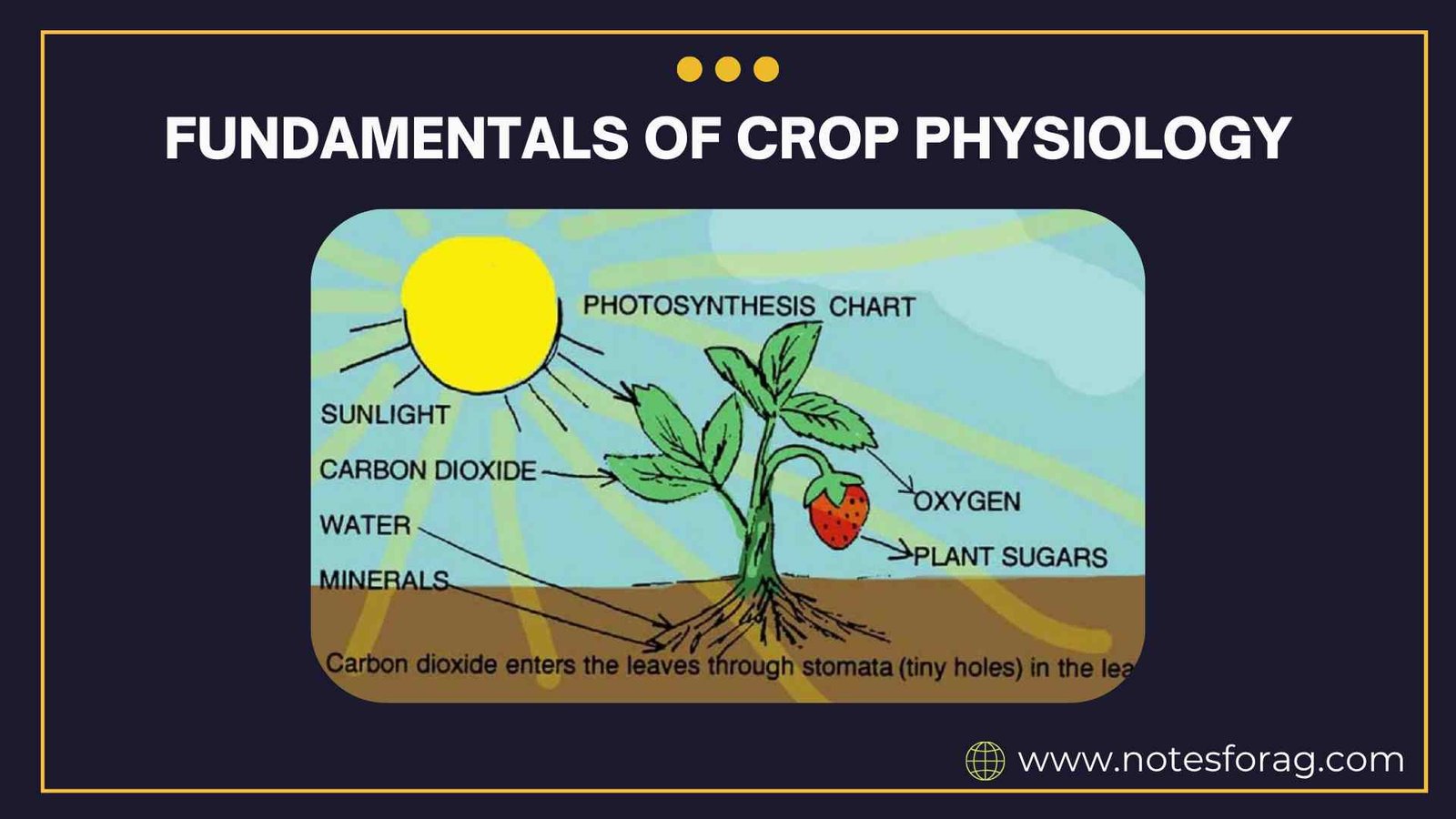Introduction to Crop Physiology
Definition and Scope of Crop Physiology

Crop physiology is a branch of plant science that focuses on the study of the vital processes, functions, and mechanisms in crops. It examines how crops grow, develop, and interact with their physical, chemical, and biological environments. Crop physiology integrates knowledge from plant anatomy, biochemistry, soil science, and environmental studies to understand how to maximize plant productivity and resilience.
Summary of Crop Physiology
- Crop physiology investigates the functional processes of crops, essential for growth and yield optimization.
- Photosynthesis, respiration, water management, and mineral nutrition form the core of crop physiological studies.
- Hormonal regulation and environmental cues dictate plant growth, development, and reproduction.
- Plants deploy complex physiological strategies to cope with abiotic stresses.
- Biotechnology and precision agriculture provide new avenues to manipulate and monitor crop physiology effectively.
Table of Contents
Importance of Crop Physiology
- Enhances understanding of plant growth and development at the cellular, tissue, and whole-plant levels.
- Aids in developing high-yielding, stress-tolerant, and climate-resilient crop varieties through breeding and biotechnological interventions.
- Informs agronomic practices such as irrigation scheduling, fertilization, pest management, and crop rotation for optimal productivity.
- Supports sustainable agriculture by improving resource use efficiency, including water, nutrients, and energy.
- Helps mitigate the adverse effects of climate change on crop performance.
Relationship of Crop Physiology with Other Disciplines
Crop physiology bridges the gap between basic plant science and applied agriculture. It is interconnected with:
- Agronomy: Practical field management of crops.
- Plant Breeding: Genetic improvement of crop varieties.
- Soil Science: Nutrient and water supply through soil.
- Plant Pathology: Understanding plant diseases and defense mechanisms.
- Biotechnology: Genetic engineering and molecular biology to enhance crop traits.
Plant Cell and Structure
Plant Cell: The Basic Unit of Life
The plant cell is the smallest unit that exhibits all characteristics of life. Unlike animal cells, plant cells have a rigid cell wall and specialized organelles like chloroplasts.
Key Organelles and Functions
- Cell Wall: Composed of cellulose; provides rigidity, mechanical support, and protection against pathogens.
- Chloroplasts: Contain chlorophyll pigments; capture light energy and convert it into chemical energy during photosynthesis.
- Vacuole: Large central structure maintaining cell turgor, storing ions, waste products, and secondary metabolites.
- Mitochondria: Sites of aerobic respiration; generate ATP, the energy currency of the cell.
- Plasma Membrane: Selectively permeable membrane that regulates nutrient and ion exchange between the cell and its environment.
- Nucleus: Controls cell activities through DNA-based genetic instructions.
Photosynthesis
Overview
Photosynthesis is the fundamental process through which green plants synthesize glucose from carbon dioxide and water using sunlight, releasing oxygen as a by-product. It forms the primary energy source for almost all life on Earth.
Photosynthesis Equation:
6CO₂ + 6H₂O + Light energy → C₆H₁₂O₆ + 6O₂
Phases of Photosynthesis
- Light Reactions (Photochemical Phase):
- Occur in the thylakoid membranes of chloroplasts.
- Capture light energy using chlorophyll.
- Involve photolysis (splitting of water) to release oxygen.
- Produce ATP and NADPH for energy storage.
- Dark Reactions (Calvin Cycle or Carbon Fixation Phase):
- Occur in the stroma of chloroplasts.
- Utilize ATP and NADPH from light reactions to fix carbon dioxide into glucose.
- The enzyme Rubisco plays a central role in carbon fixation.
Types of Photosynthetic Pathways
- C3 Plants: Most common photosynthetic pathway; efficient under moderate climates but prone to photorespiration. Examples: wheat, rice, soybean.
- C4 Plants: Have specialized anatomy to minimize photorespiration; efficient under high light and temperature. Examples: maize, sugarcane, sorghum.
- CAM Plants: Adapted to arid conditions; open stomata at night to conserve water. Examples: pineapple, cactus.
Factors Affecting Photosynthesis
- Light intensity and quality (wavelength)
- Temperature: affects enzymatic reactions
- Carbon dioxide concentration: higher levels increase photosynthetic rate
- Water availability: essential for photolysis and turgor maintenance
- Nutrient availability, particularly nitrogen and magnesium for chlorophyll synthesis
Respiration in Plants

Types of Respiration
- Aerobic Respiration:
- Occurs in the mitochondria in the presence of oxygen.
- Breaks down glucose into carbon dioxide, water, and energy (ATP).
- Produces 36-38 ATP molecules per glucose molecule, making it highly efficient.
- Anaerobic Respiration (Fermentation):
- Occurs in the absence of oxygen, typically in waterlogged soils.
- Produces less energy (2 ATP molecules per glucose) and leads to the formation of by-products like ethanol or lactic acid.
Stages of Respiration
- Glycolysis: Breakdown of glucose to pyruvate in the cytoplasm.
- Krebs Cycle: Complete oxidation of pyruvate in the mitochondria.
- Electron Transport Chain (ETC): Maximum ATP production via oxidative phosphorylation.
Significance of Respiration
- Provides energy for all cellular and physiological processes including nutrient uptake, growth, and biosynthesis.
- Supports active transport mechanisms and enzyme activation.
Water Relations in Plants
Water Absorption and Movement
- Water is absorbed by root hairs through osmosis.
- Moves through the root cortex via apoplast and symplast pathways to the xylem.
- Transported upward through the plant by the cohesion-tension mechanism.
Transpiration
- Loss of water vapor mainly through stomata, and to a lesser extent through cuticle and lenticels.
- Regulates plant temperature through evaporative cooling.
- Drives nutrient transport from roots to shoots via transpiration stream.
Water Potential and Osmosis
- Water moves from regions of higher water potential to lower water potential.
- Osmosis helps maintain cell turgor essential for cell expansion, stomatal function, and physiological activities.
Factors Influencing Water Movement
- Soil water availability
- Air temperature, humidity, and wind speed
- Stomatal aperture regulated by guard cells
- Root hydraulic conductivity
Mineral Nutrition and Nutrient Uptake
Essential Plant Nutrients
- Macronutrients: Required in large amounts; involved in structural and metabolic processes.
- Micronutrients: Needed in trace amounts; critical for enzyme functions and photosynthesis.
Functions of Major Nutrients
- Nitrogen (N): Component of amino acids, proteins, nucleic acids, and chlorophyll; promotes lush vegetative growth.
- Phosphorus (P): Vital for energy transfer (ATP), nucleic acids, and root development.
- Potassium (K): Regulates osmotic balance, enzyme activation, and stomatal movement.
- Calcium (Ca): Important for cell wall structure and membrane stability.
- Magnesium (Mg): Central atom in chlorophyll; essential for photosynthesis.
- Sulfur (S): Constituent of certain amino acids and vitamins.
Nutrient Uptake Mechanisms
- Passive Absorption: Movement of ions along the concentration gradient without energy expenditure.
- Active Absorption: Requires energy (ATP) to transport ions against the concentration gradient.
Nutrient Deficiency Symptoms
- Nitrogen: General chlorosis, especially in older leaves.
- Phosphorus: Purplish discoloration of leaves and stunted growth.
- Potassium: Marginal scorching and curling of leaf tips.
- Micronutrient deficiencies: Specific symptoms like interveinal chlorosis (iron deficiency).
Plant Growth and Development
Growth Phases
- Cell Division (Meristematic Activity): Involves rapid mitotic division in root and shoot apices.
- Cell Elongation: Expansion of cells by water uptake and cell wall loosening.
- Cell Differentiation: Specialization of cells into tissues and organs like leaves, stems, and roots.
Plant Hormones (Phytohormones)

- Auxins: Promote elongation of cells in shoots; induce root formation; suppress lateral bud growth.
- Gibberellins: Stimulate stem elongation, break seed dormancy, and enhance fruit size.
- Cytokinins: Promote cell division and delay leaf senescence by maintaining chlorophyll content.
- Abscisic Acid (ABA): Acts as a growth inhibitor; promotes dormancy and stomatal closure under water stress.
- Ethylene: Gaseous hormone involved in fruit ripening, flower senescence, and leaf abscission.
Photoperiodism and Vernalization
- Photoperiodism: Plant’s physiological response to day/night length; controls flowering and seasonal growth cycles.
- Vernalization: Cold treatment required by certain plants to initiate flowering (e.g., winter wheat).
Stress Physiology in Crops
Abiotic Stresses
- Drought Stress: Leads to reduced photosynthesis, wilting, and stunted growth.
- Heat Stress: Damages proteins, enzymes, and membranes; disrupts cellular homeostasis.
- Salinity Stress: Causes ionic toxicity and osmotic imbalance, limiting water uptake.
- Cold Stress: Reduces membrane fluidity and enzyme activity; can lead to frost damage.
Physiological Adaptations to Stress
- Deep and extensive root systems to access deeper soil moisture.
- Stomatal regulation to minimize water loss.
- Synthesis of osmoprotectants like proline and glycine betaine to stabilize proteins and membranes.
- Production of antioxidant enzymes to mitigate oxidative stress.
Source-Sink Relationship
Concept of Source and Sink
- Source: Organs that produce assimilates (sugars) via photosynthesis, primarily mature leaves.
- Sink: Organs that consume or store assimilates such as roots, developing seeds, fruits, and storage tissues.
Assimilate Partitioning
- Assimilates are transported via phloem from sources to sinks.
- Partitioning determines yield potential and quality.
- Influenced by developmental stage, hormonal signals, and environmental factors like light, temperature, and water availability.
Reproductive Physiology
Flowering and Fruit Set
- Controlled by photoperiod, temperature, and endogenous hormonal signals.
- Involves the transition from vegetative to reproductive phase, followed by flower development and fruit setting.
Pollination and Fertilization
- Essential for the production of seeds and fruits.
- Cross-pollination (pollen transfer between plants) increases genetic diversity.
- Self-pollination (pollen transfer within the same flower or plant) ensures reproductive success in isolated conditions.
Hormonal Regulation of Reproduction
- Auxins and gibberellins promote fruit development and prevent premature fruit drop.
- Ethylene regulates flower senescence and fruit ripening.
Recent Advances in Crop Physiology
Biotechnology Applications
- Genetic engineering to develop crops with enhanced photosynthetic efficiency and stress tolerance.
- CRISPR and gene-editing tools for precise manipulation of physiological traits.
Precision Agriculture
- Utilization of remote sensing, drones, and soil sensors to monitor physiological parameters in real time.
- Helps optimize input use (water, fertilizers) and manage stress conditions effectively.
Climate-Resilient Crop Research
- Breeding for improved heat, drought, and salinity tolerance.
- Developing crop models to predict physiological responses to future climate scenarios.
Conclusion
Crop physiology provides foundational knowledge critical for advancing agricultural productivity, sustainability, and food security. By comprehensively understanding physiological processes such as photosynthesis, respiration, water relations, nutrient uptake, growth regulation, and stress responses, scientists and farmers can make informed decisions to improve crop performance under diverse environmental conditions. Modern tools like biotechnology and precision agriculture further enhance our ability to optimize crop physiology for the challenges of tomorrow.
Frequently Asked Questions (FAQs)
What are the main environmental factors that affect photosynthesis in crop plants?
Photosynthesis in crops depends on several key environmental factors:
Light intensity & quality: Strong, full-spectrum sunlight boosts chlorophyll activity.
Temperature: Ideally within 15–35 °C; extremes reduce enzyme function.
CO₂ concentration: Higher levels enhance carbon fixation via RuBisCO.
Water availability: Crucial for photolysis and stomatal opening.
Nutrient status: Especially nitrogen and magnesium necessities for chlorophyll and enzymes.
Optimizing these factors can significantly improve crop growth and yield.
How do C3, C4, and CAM plants differ in water use efficiency and climate adaptation?
Crop species vary in physiology and suitability to climate:
C3 plants (e.g., wheat, rice): Typical photosynthesis; moderate yields; low water-use efficiency; do poorly in hot, dry climates.
C4 plants (e.g., maize, sugarcane): Specialized anatomy minimizes photorespiration; higher water-use efficiency; thrive in high light/temperature.
CAM plants (e.g., pineapple, cactus): Fix CO₂ at night; close stomata by day; highest water-use efficiency, ideal for arid environments.
Choosing the appropriate physiology type can guide planting in different environments.
What roles do plant hormones like ABA, auxins, and gibberellins play in crop stress response and development?
Plant hormones (phytohormones) regulate key growth and stress responses:
Abscisic acid (ABA): Signals under drought/salinity stress induces stomatal closure and seed dormancy.
Auxins: Promote root development, cell elongation, and directional growth (phototropism, gravitropism).
Gibberellins: Break seed dormancy, drive stem elongation, boost fruit/seed growth and flowering.
Cytokinins & Ethylene: Assist in cell division, delaying leaf senescence (cytokinins), and ripening or stress-induced aging (ethylene).
These hormones collectively coordinate plant development and resilience under diverse conditions.
What is crop physiology?
Crop physiology is the scientific study of the functional processes in crop plants, focusing on growth, development, and physiological responses to environmental factors.
Related Articles

